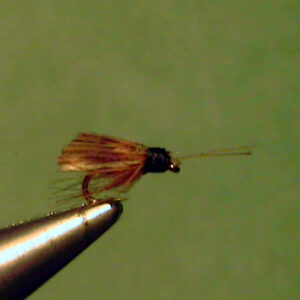Hook Size: 20
The Perfect Fly Short-horned Sedge Caddis Pupa trout fly imitates the Short-horned Sedge Caddis larva stage of life. Their larvae live in a case type shelter until the pupa is formed just prior to the hatch. Just prior to the hatch, the pupa comes out of its case and accents from the bottom of the stream to the surface where it emerges into an adult. This makes them easy prey for trout. They should be fished from the bottom to the surface of the water by first allowing the fly to sink to the bottom and then bringing the fly up to the surface using the current and the tip of the rod.
These caddisflies hatch both in the early Spring and another smaller hatch occurs in
the Fall. The hatches last a long time and can vary in intensity. If you start seeing a
lot of them crawling around on the rocks and banks you will know they have
hatched. Unfortunately, that’s usually too late to fish the pupa stage of the hatch.
That would indicate many of them had already hatched.
These caddisfly pupae use their middle legs to swim to the surface. They can hatch
on the surface but more often, they run on the surface to the banks or rocks to
hatch into adults out of the water. You will see this activity occurring often where
these caddisflies are plentiful.
Presentation:
The best way to imitate these caddisflies is to make a down and across presentation
and mend the line a couple of times to get the fly down. Allow the fly to swing
around until it is directly downstream of your position. By just stopping the rod,
holding it up at about a 45 degree angle, the current will bring the fly back to the
surface. Let it sit for a few seconds and repeat the cast moving downstream a step
or two.
Copyright 2013 James Marsh

